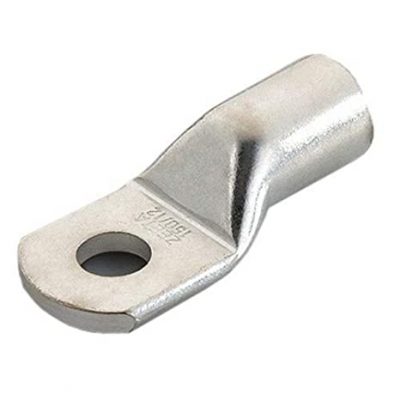Project Report For Cable Lugs
Introduction
Project Report for Cable Lugs is as follows.
Cable lugs are objects that join cables to other cables, surfaces, mechanisms, or electrical equipment. A typical illustration of a cable lug is the clamp that joins wires to an automotive battery, as well as the ends of battery jumper cables. Cable lugs are typically employed in situations where permanent, direct attaching techniques are not practical or essential since they are simple to install and remove for repairs or maintenance.
Sometimes the terms “cable” and “wire” are used interchangeably. While wires only have one wire strand, cables are constructed of numerous wire strands. With the right kind of cable lugs, both cables and wires may be utilised.
A cable lug’s one end is used to attach a cable, which, depending on the design, may be soldered, welded, or crimped. To fit specific applications, a variety of sizes, configurations, and material kinds are frequently offered; nonetheless, metal is the most frequently utilised material.
The compatibility of the connector end of a cable lug with the terminal type or anchoring technique is usually taken into consideration. For screw terminals, fork or U-shaped lugs are utilised; for bolt-on applications, closed-ring or O-type lugs; and for press-on pin or blade terminals, pin or spade lugs. Thick cables can be connected to connectors with lesser diameters by using a cable lug, which also functions as a cable-size reduction.

Types Of Cable Lugs
- U type lugs or fork type lugs: As the name says, the connecting component of fork type or U type lugs is a flat U shape, which is why they are also known as U type lugs. It can be used to link relays, timers, contactors, and other devices. Because of its appearance, it is also known as fork type lugs.
- Pin type lugs: Pin type lugs are commonly used in the electrical industry. It is commonly used to link control and indicator wires to relays and other electrical and electronic equipment. Its thin and long pin type structure makes operation simple and practical.
- Ring Type Lugs: As the name implies, ring type lugs are closed, ring-shaped lugs. It is most commonly used in low voltage applications, such as the wiring of switchboards, MCBs, and other electrical equipment in homes and businesses. It is really reliable. It is often made of Alluminum and quality copper.
- Flat type lugs: These are solid flat connectors with an I shape. It has an I shape similar to pin type lugs, but the main difference is that flat type lugs have solid flat connectors and pin type lugs have hollow pin connectors. It is also used in low voltage control cables.
Get Completely Custom Bankable Project Report
Market Potential for Cable Lugs
The Cable Lugs Market was estimated to be worth $5.56 billion in 2021, and from 2022 to 2029, total sales are expected to grow at a CAGR of 6.75%, or around $9.37 billion.
The market for cable lugs is projected to reach US$ 8.23 billion. Electric current may be distributed and supplied between electrical wires continuously when cable lugs are used. The Type, Application, and Regional sectors of the market for cable lugs are the main focus of this analysis.
This study carefully examines the key industry participants and geographical areas (North America, Asia Pacific, Europe, Middle East & Africa, and South America). It is an in-depth analysis of the several sectors’ fast developments in the modern era. Factual information, graphic representations, and presentations are used to convey the main data analysis for the historical period from 2017 through 2021. the market’s key players
The market for cable lugs is expanding as a result of the rising demand for low voltage and medium voltage electrical systems in the automotive and construction sectors. The International Energy Agency (IEA) predicts that even though the world’s energy consumption fell by 3.8 percent in the first quarter of 2020—the worst shock in seven decades—it will increase by 1.3 percent year through 2040 due to growing demand for energy services as well as other factors. Increased energy consumption across all geographies, which has led to the construction of substantial energy transmission and distribution infrastructure, is predicted to be the main driver of cable lug demand.

